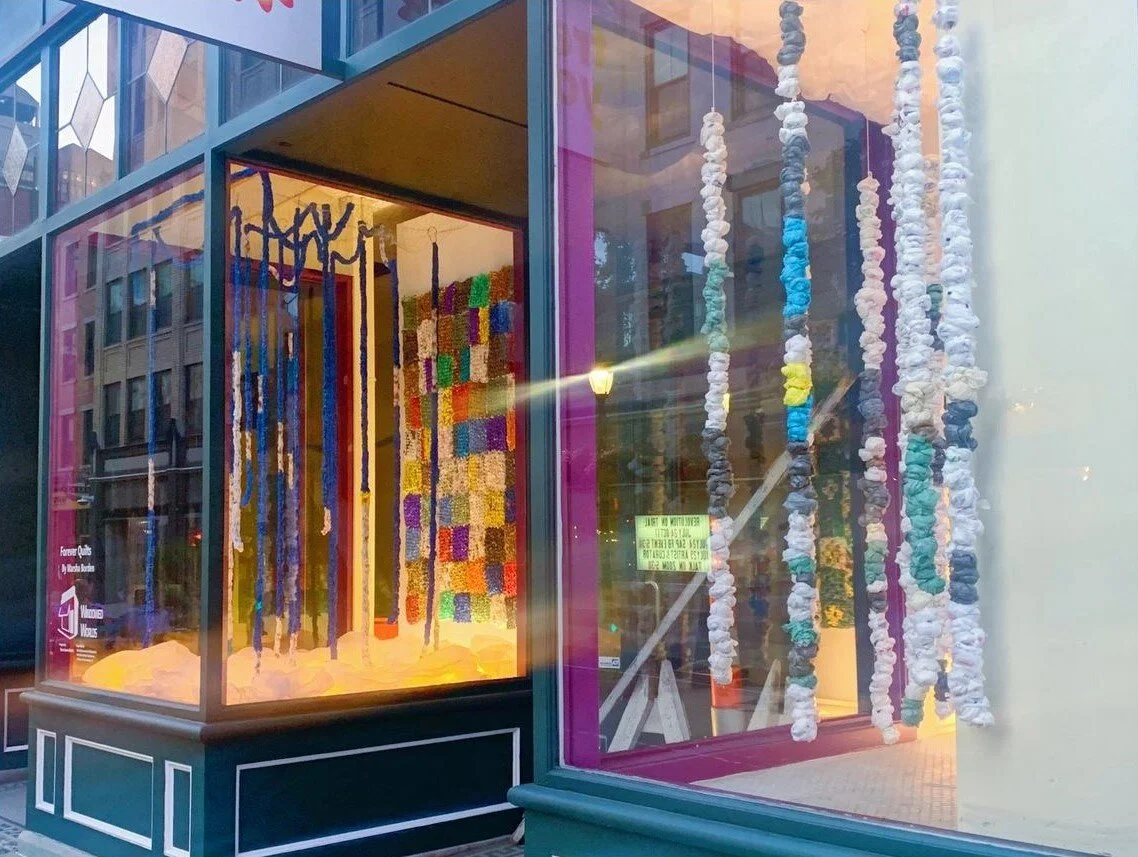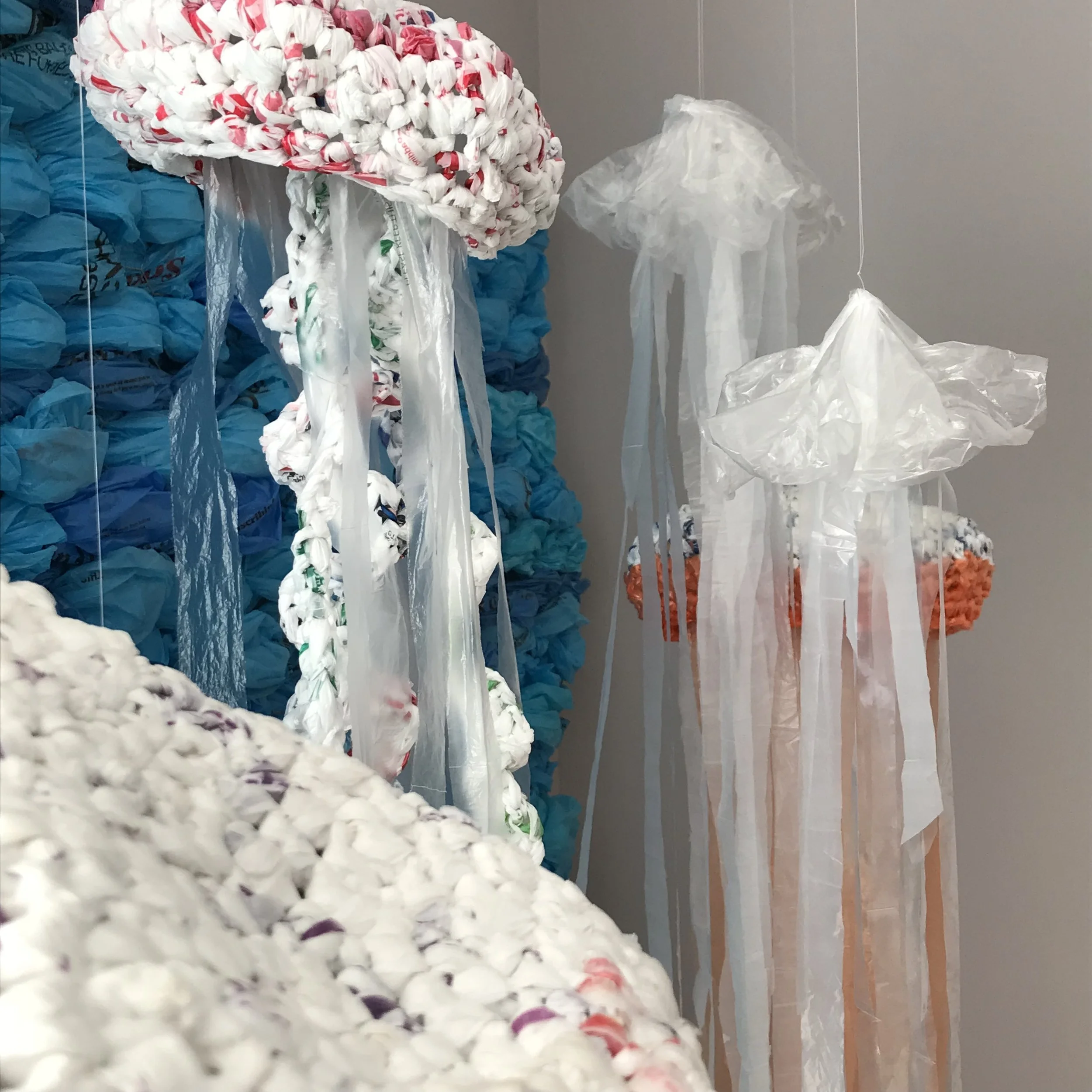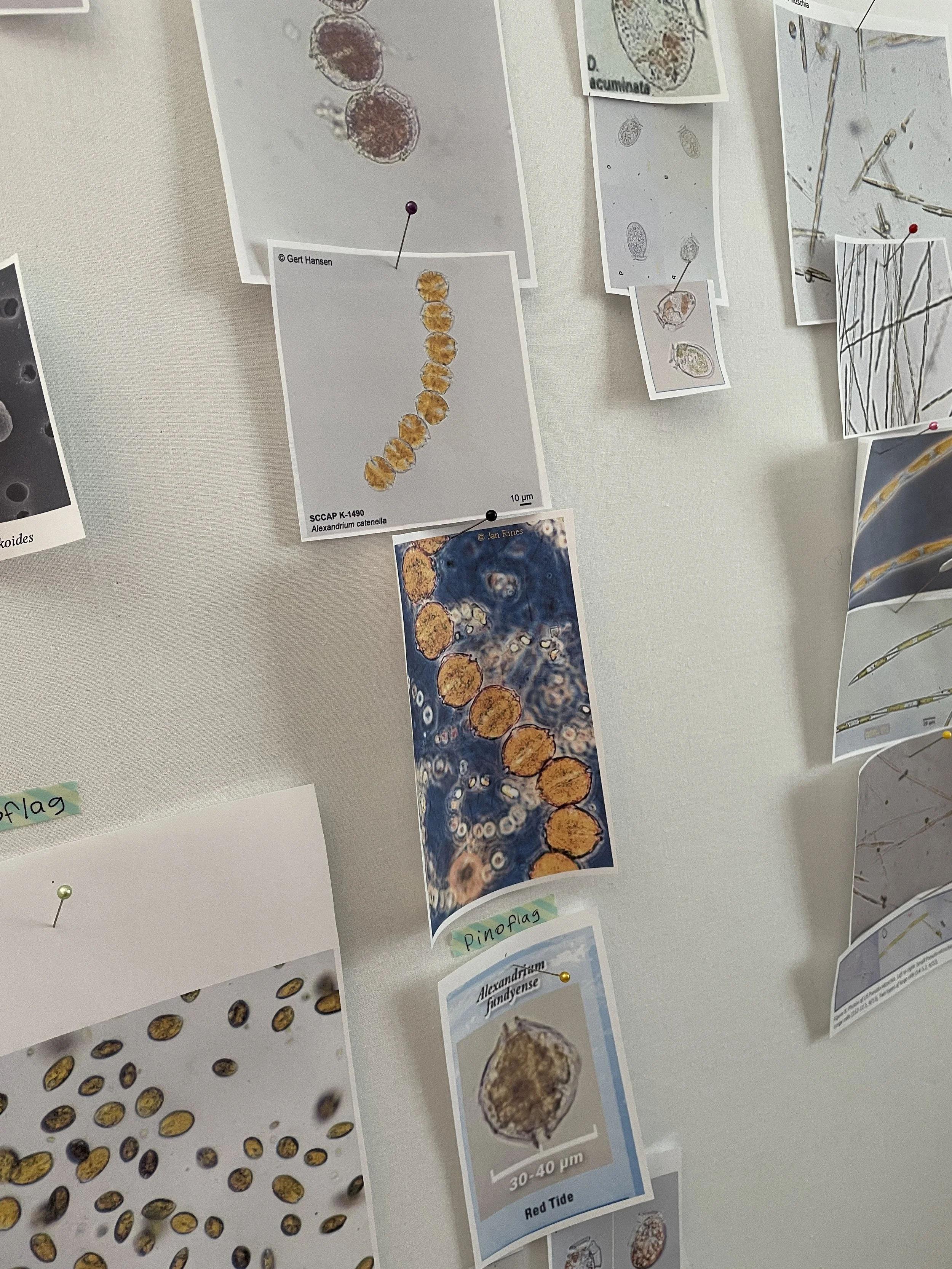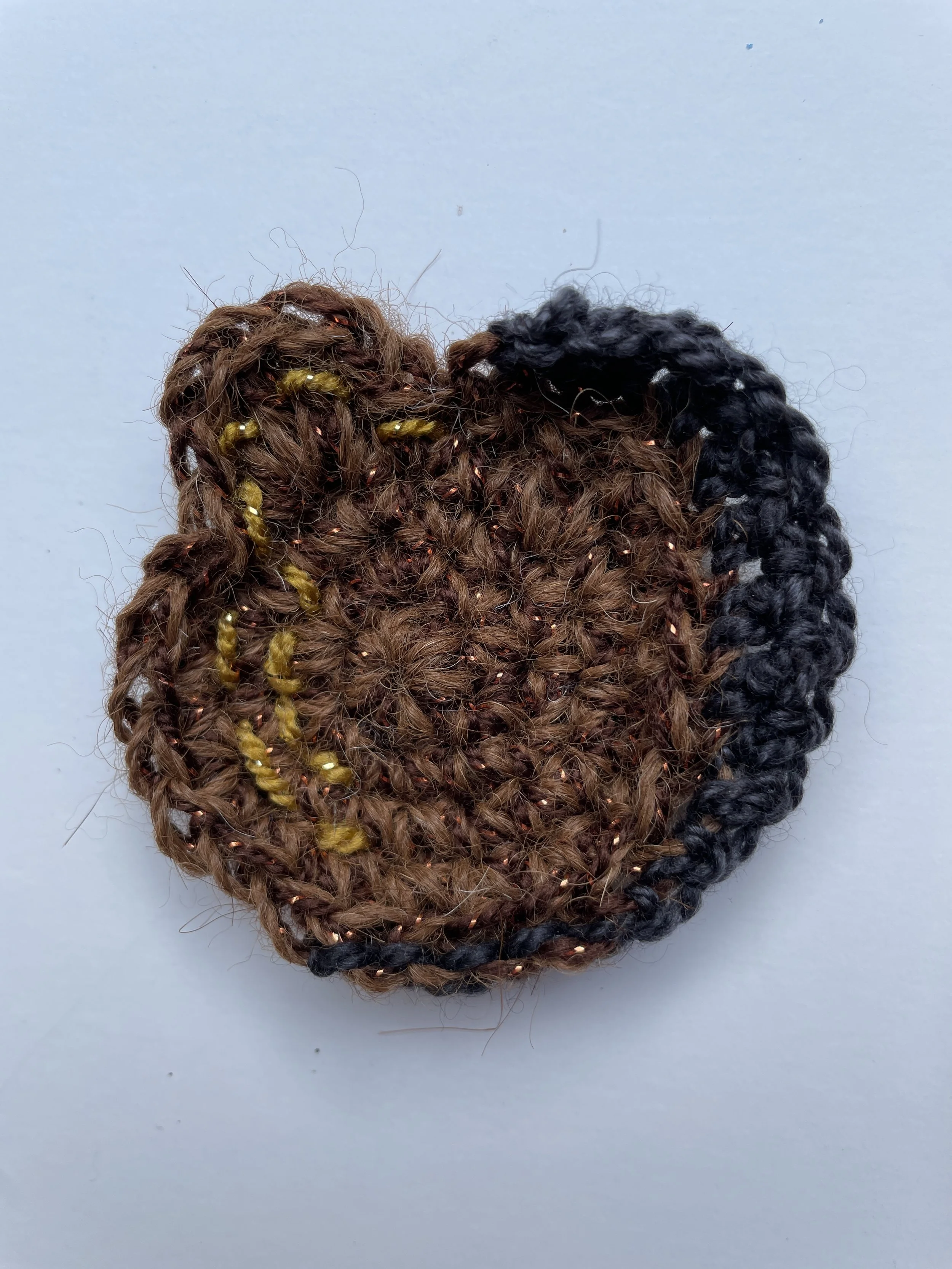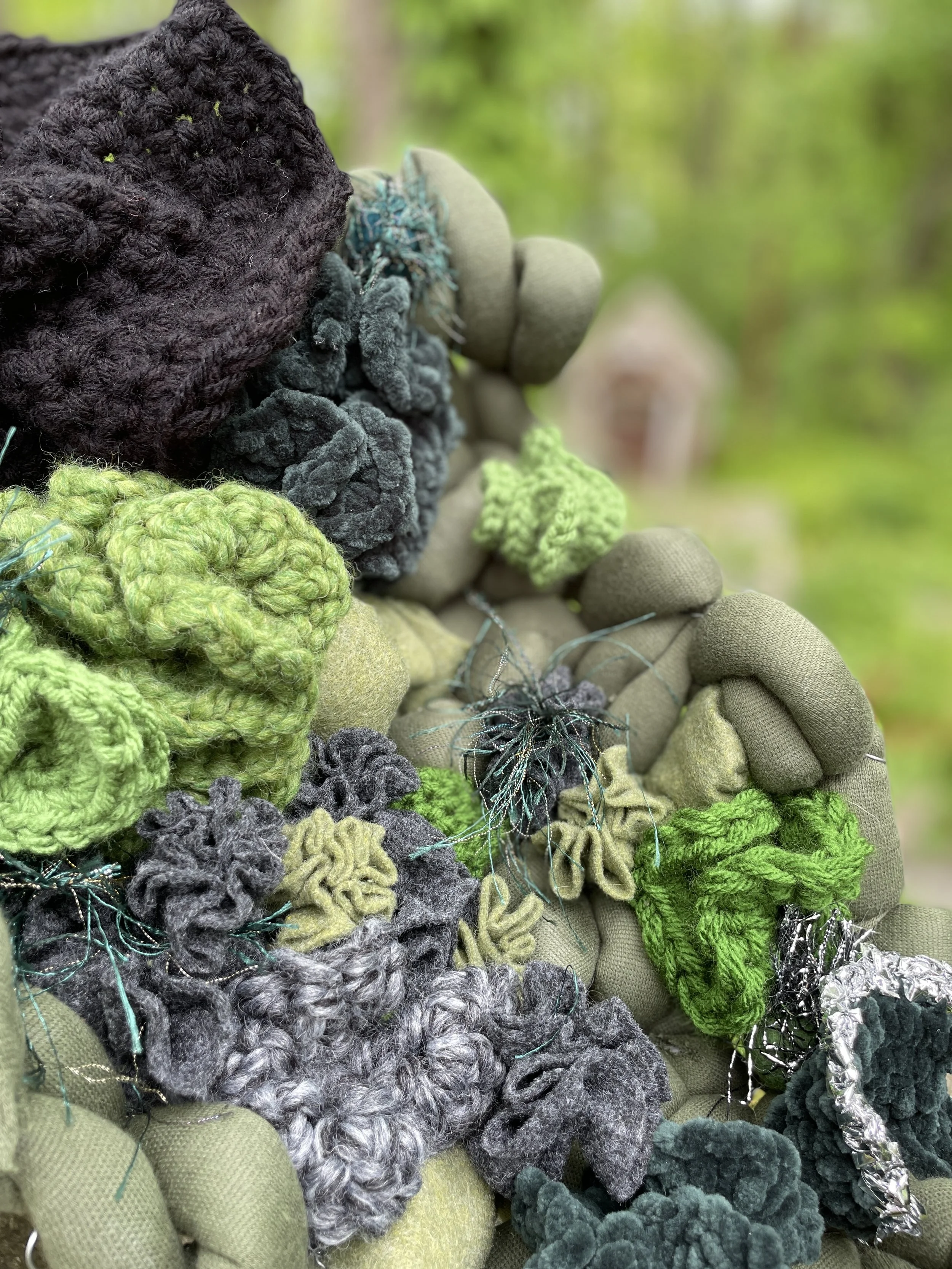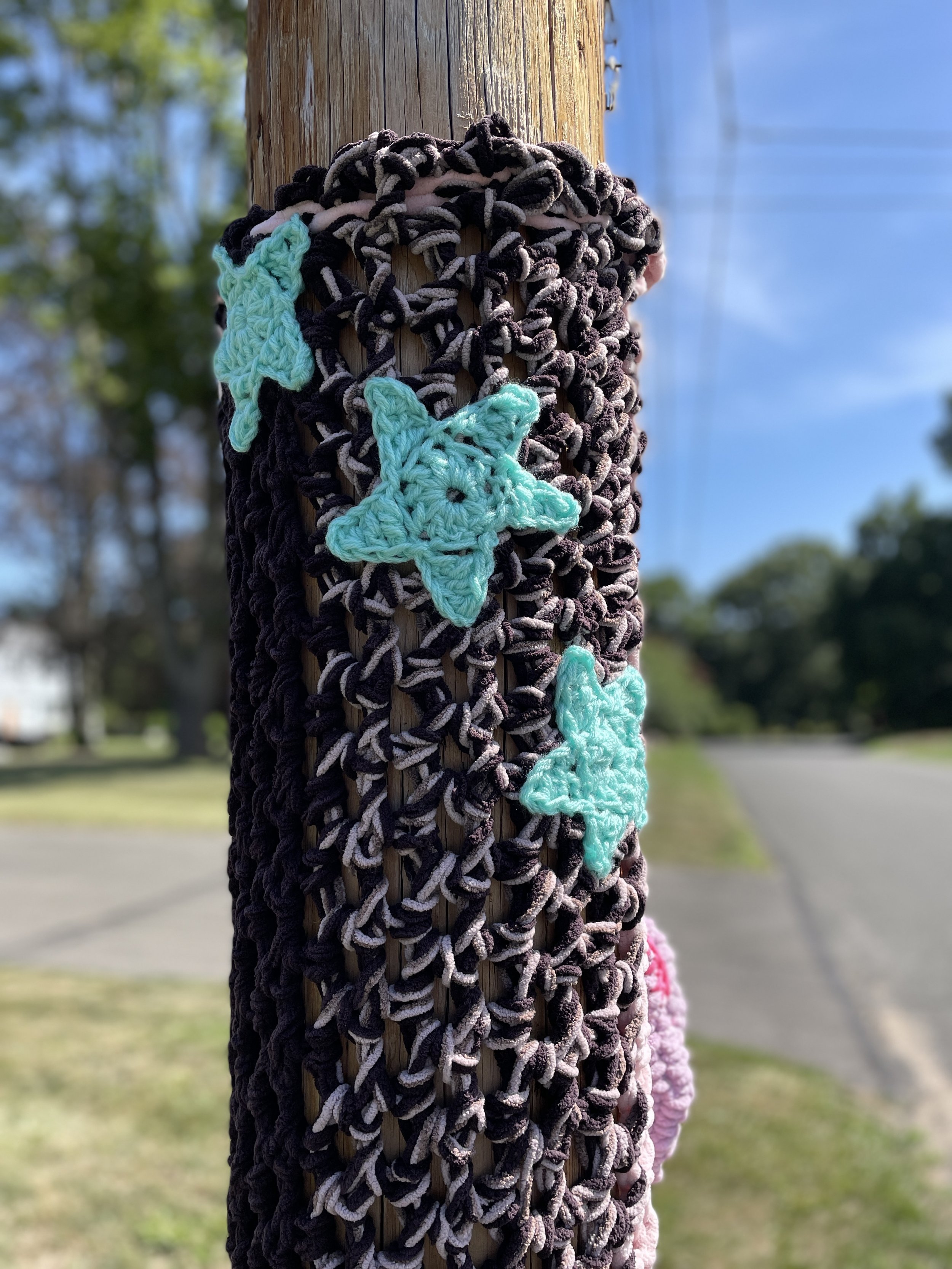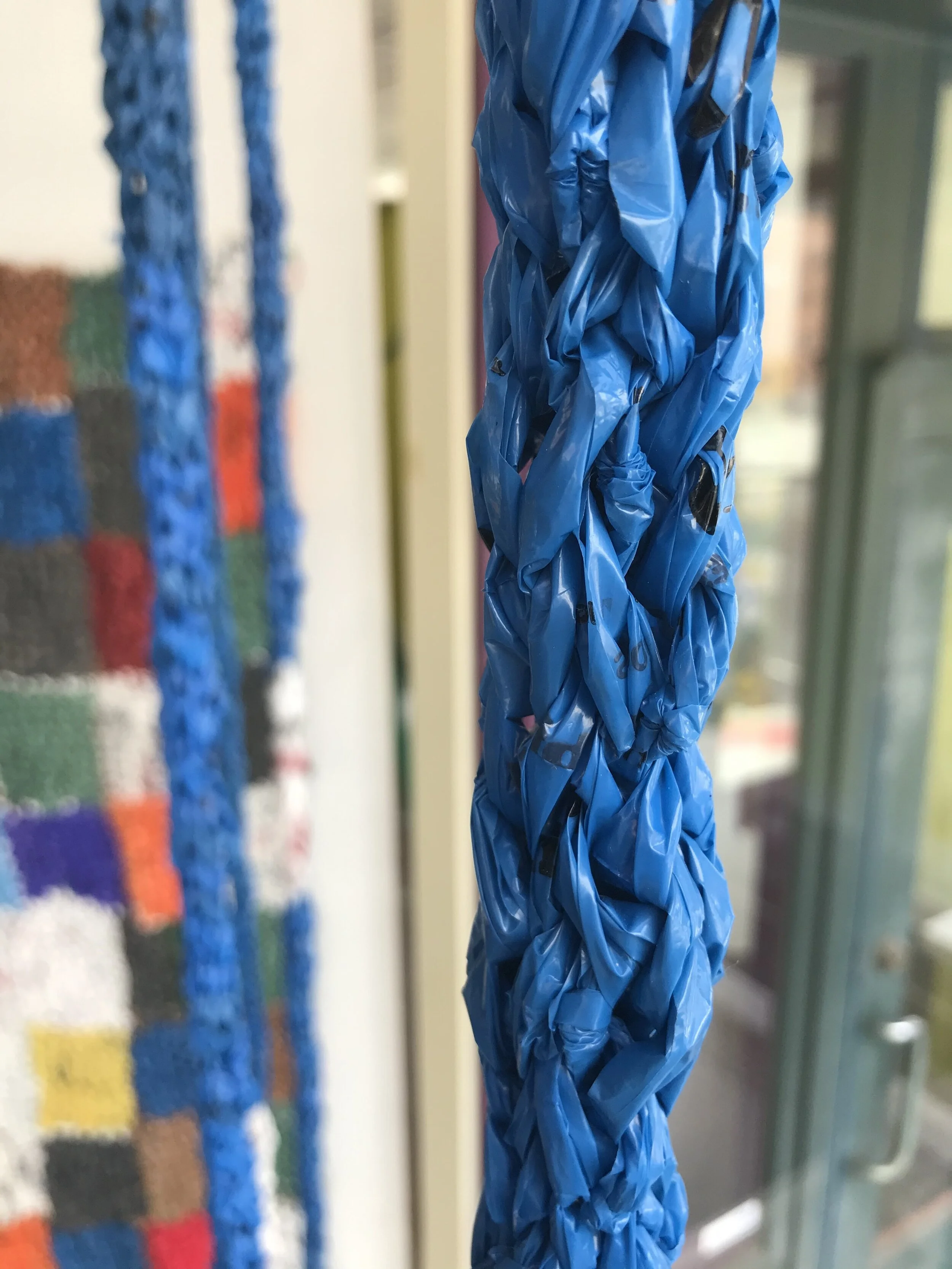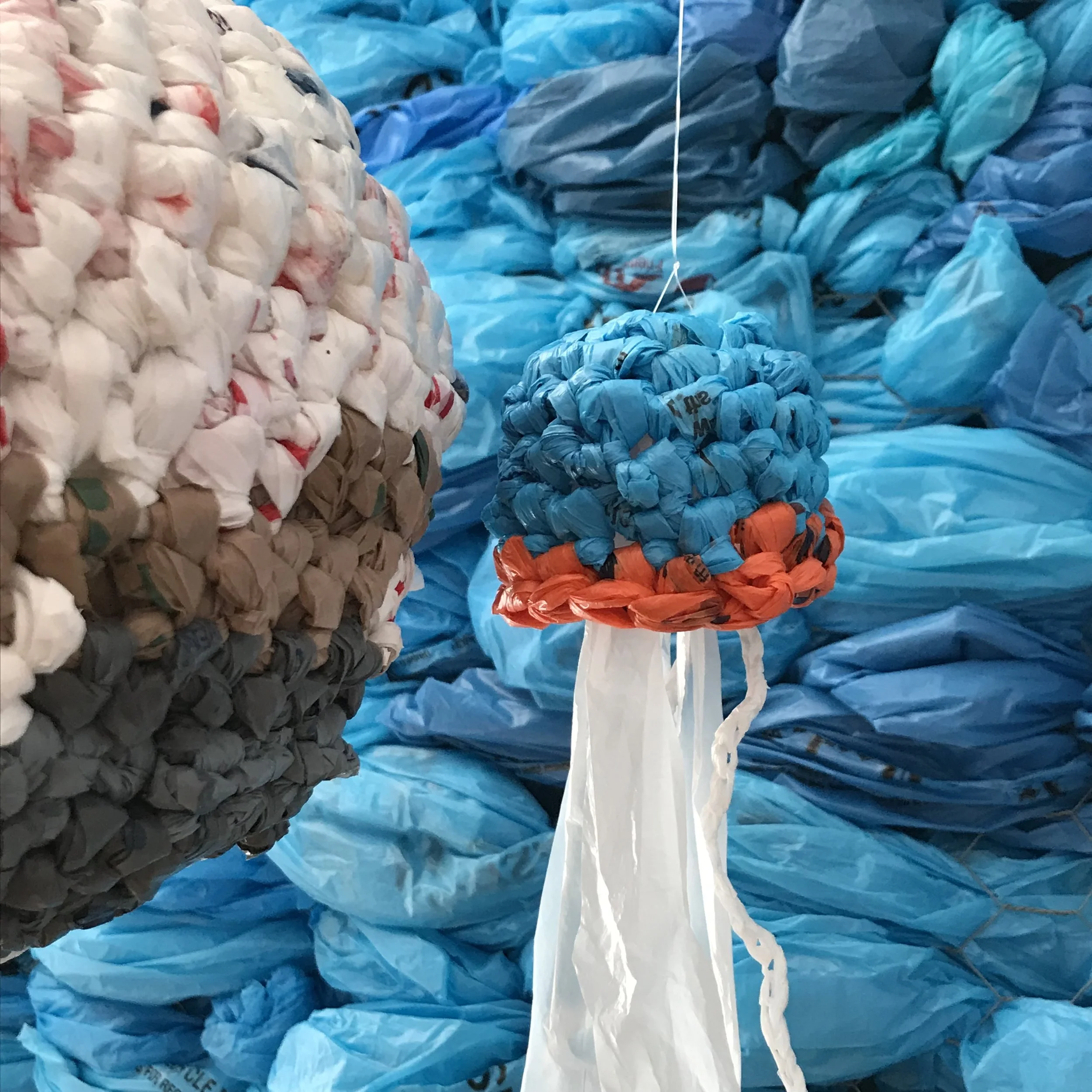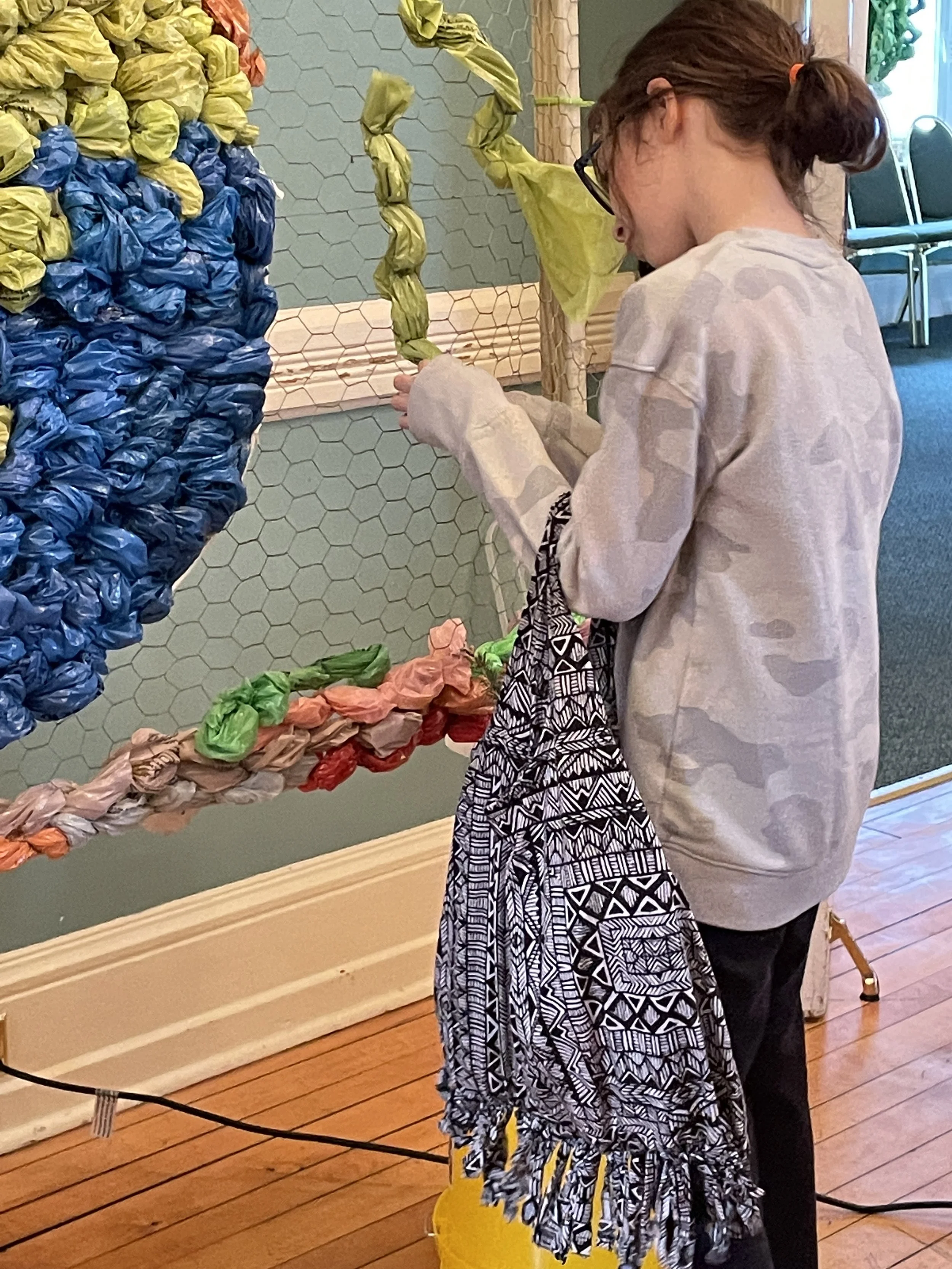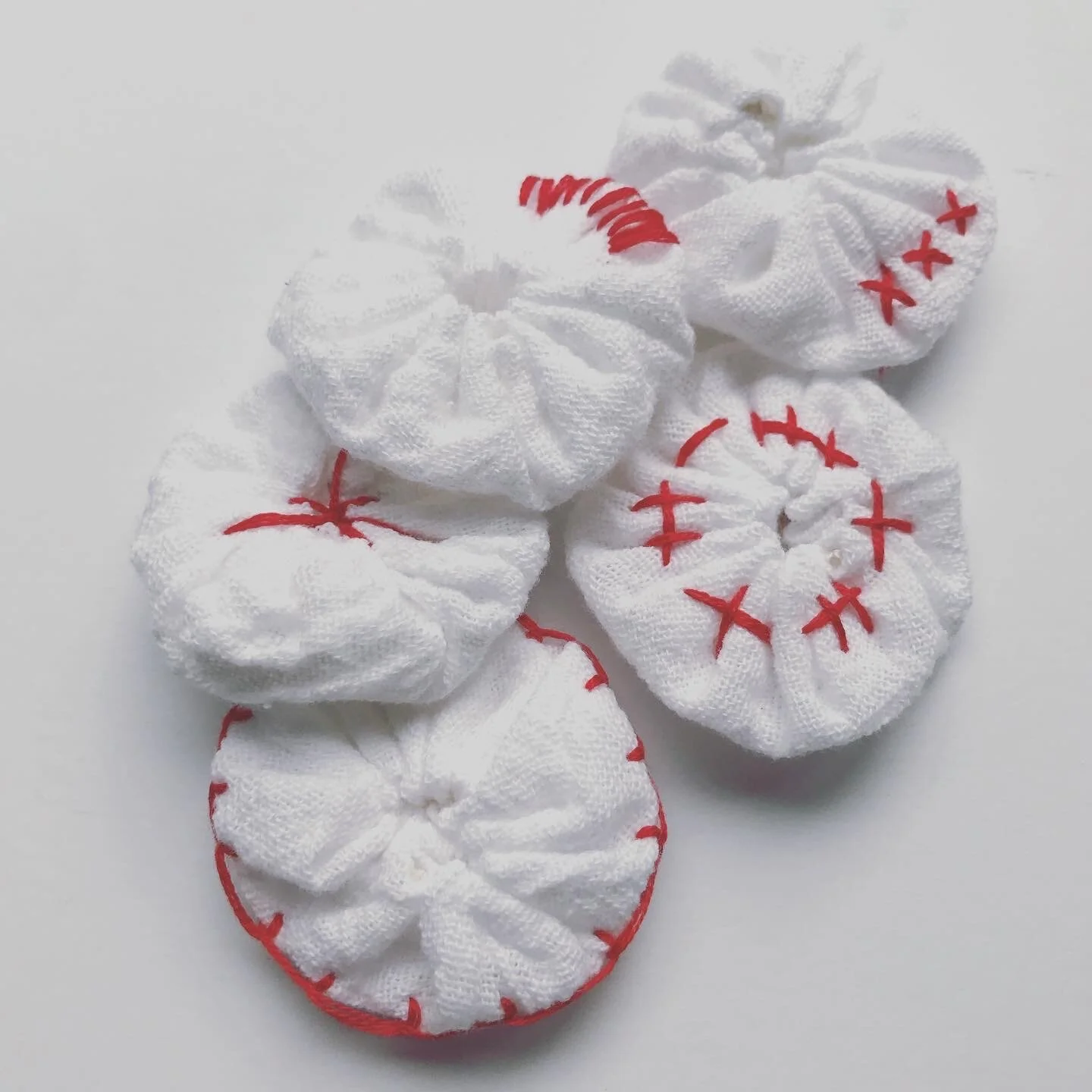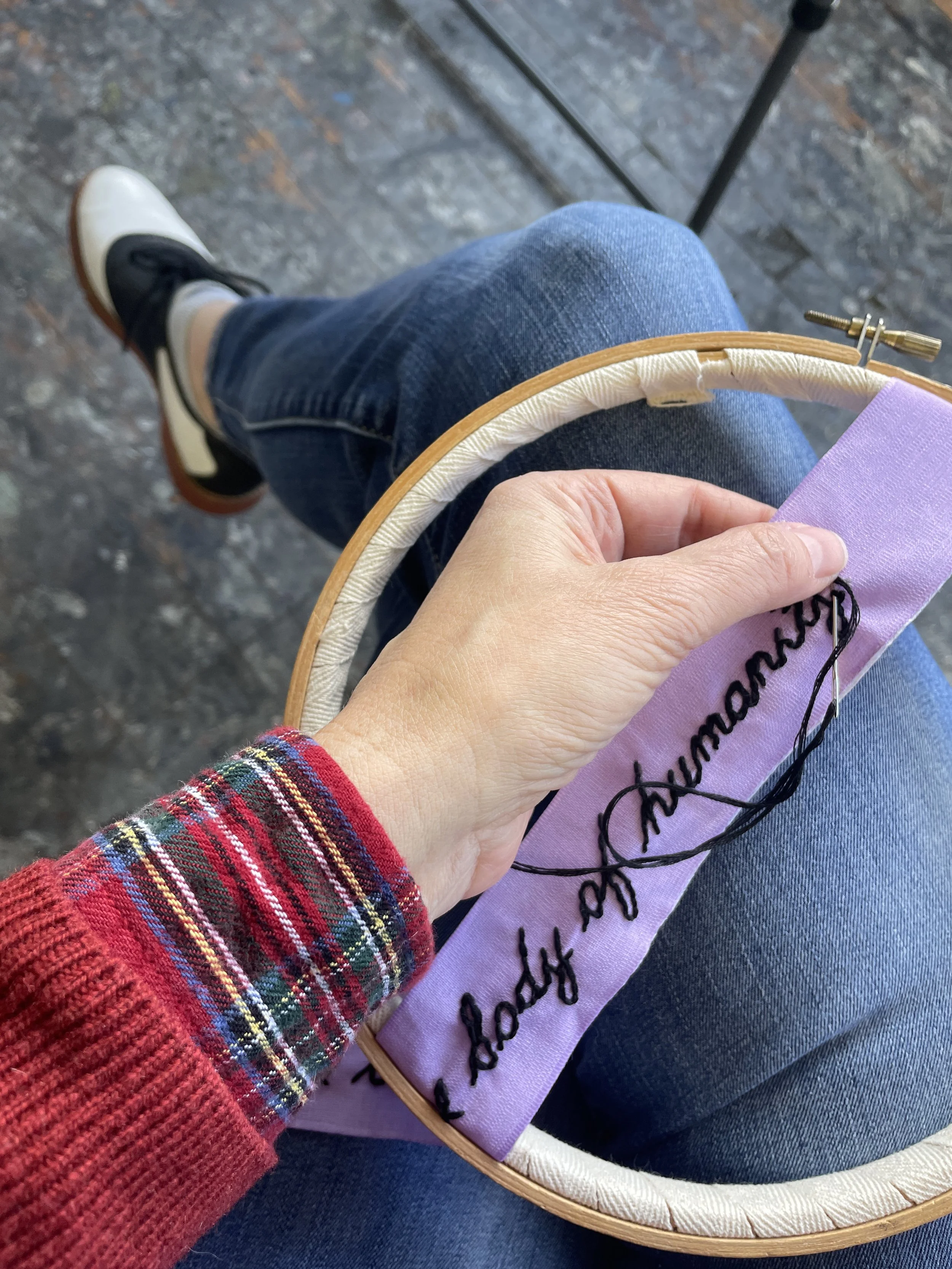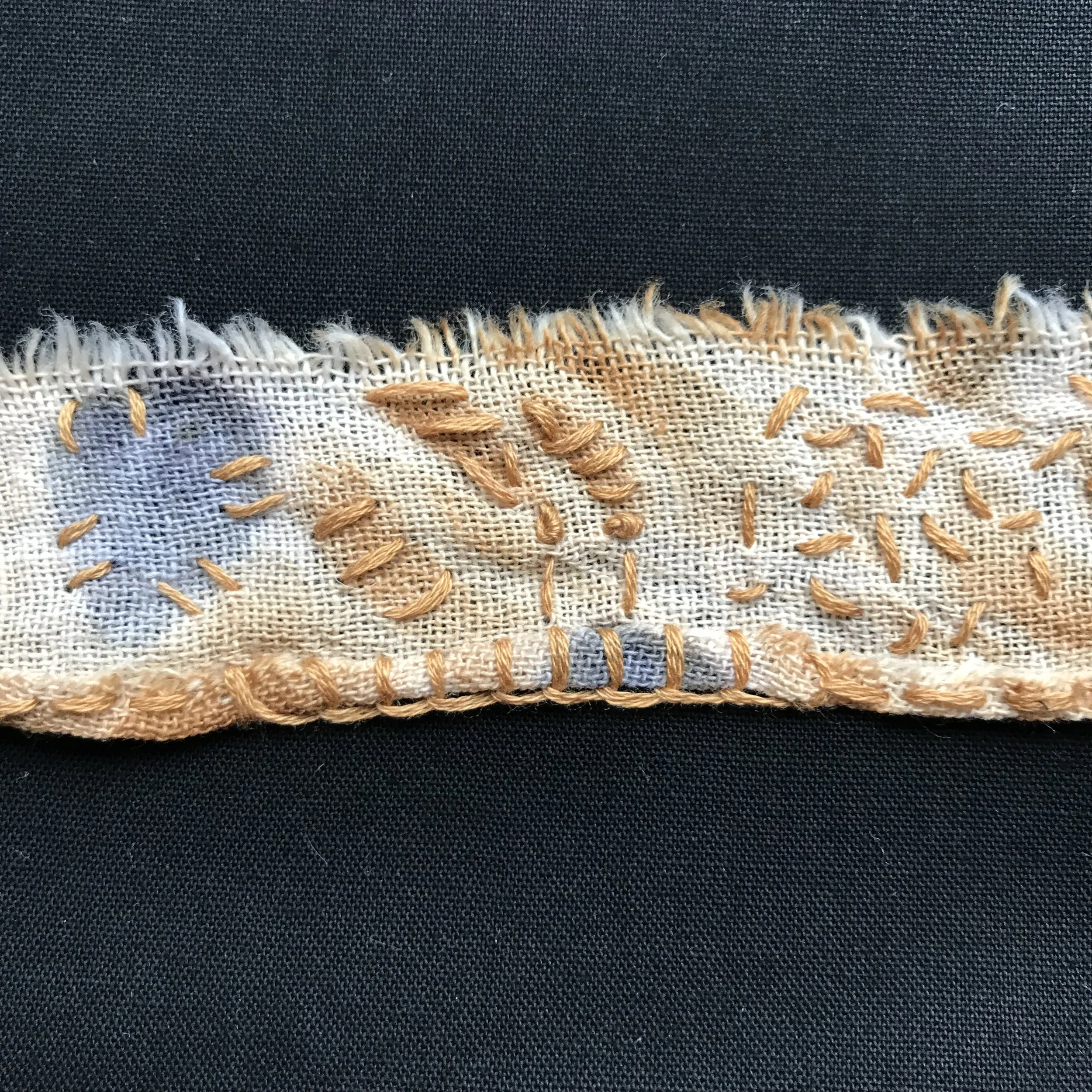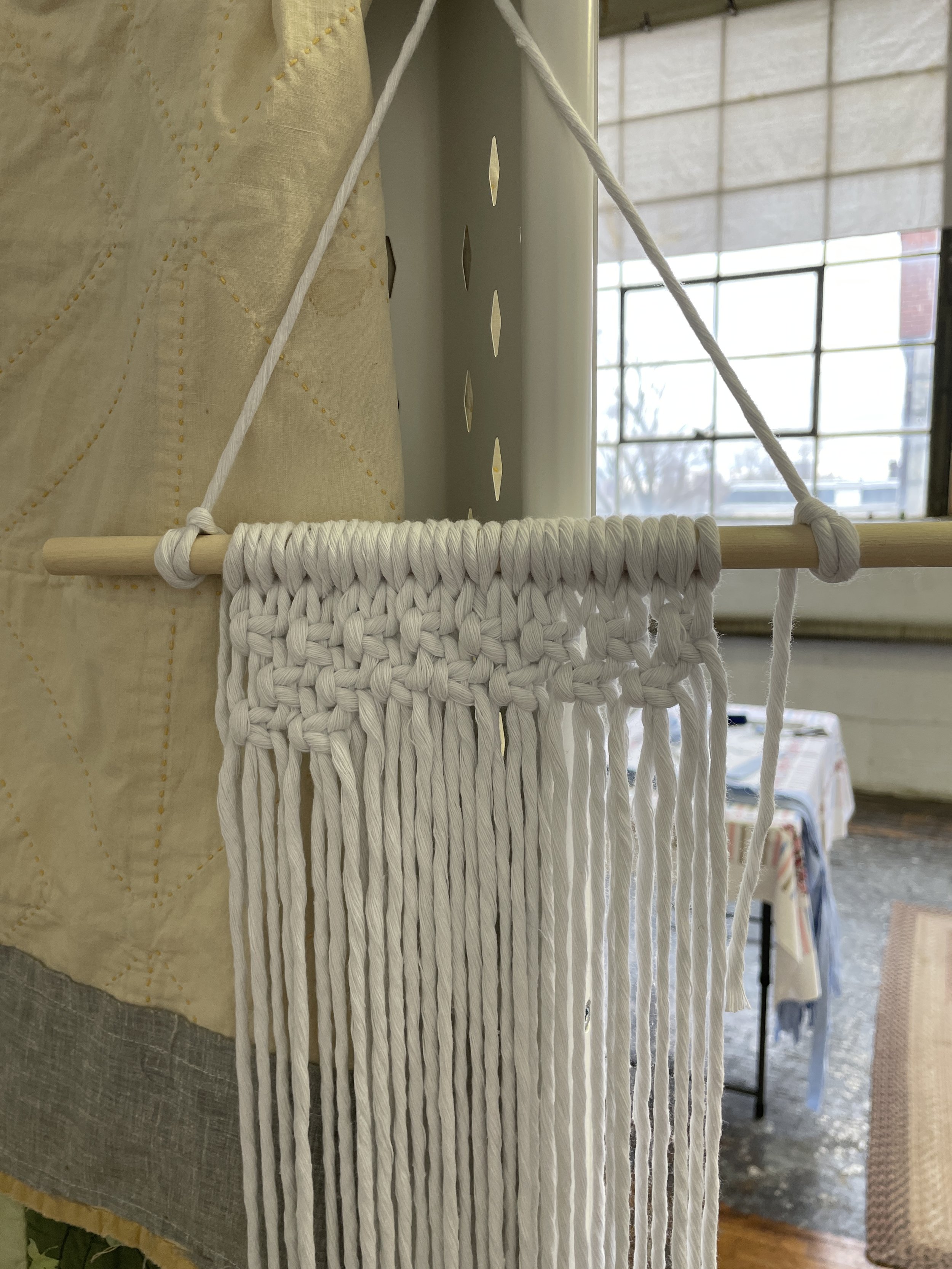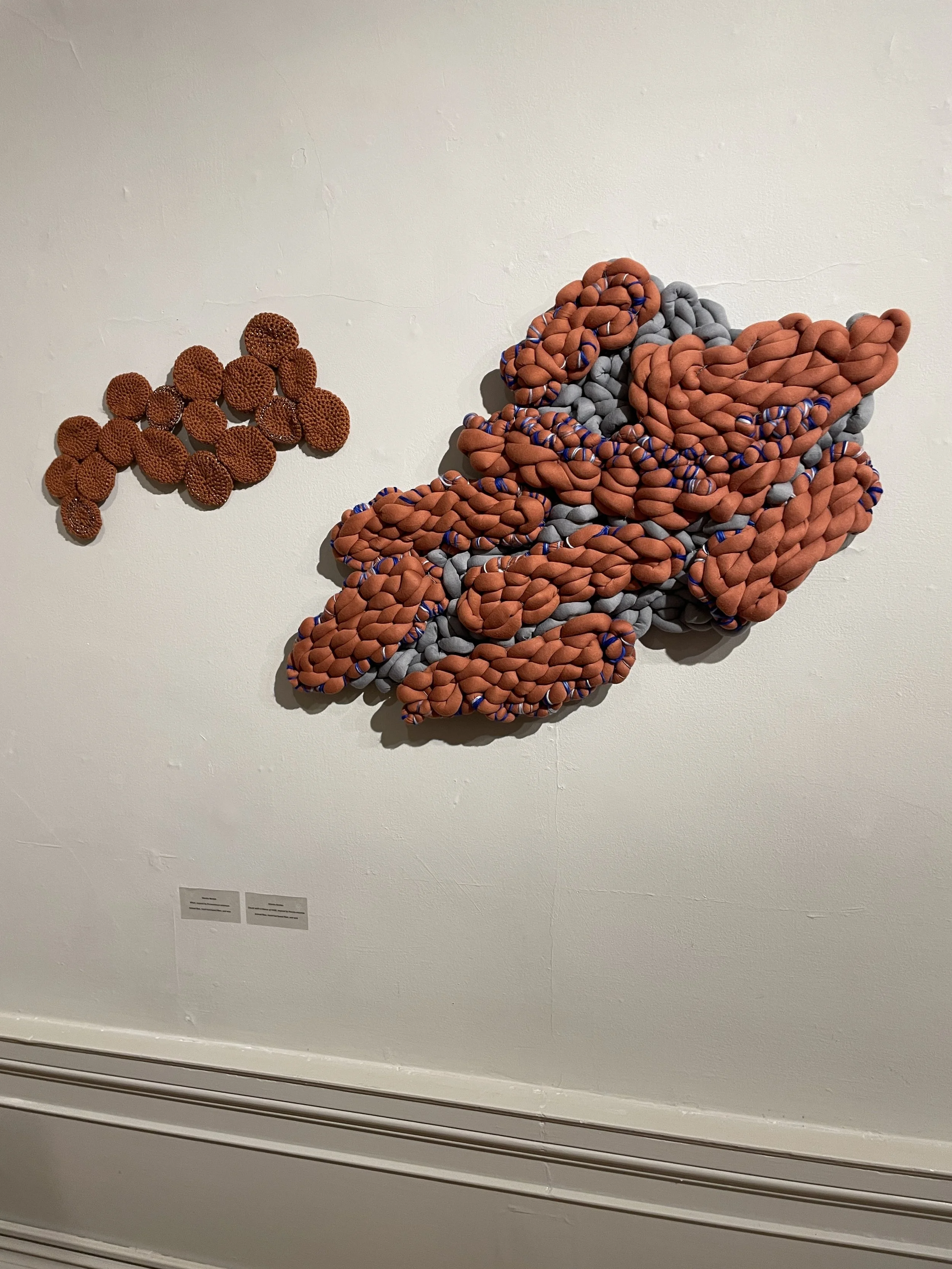Marsha Borden
In my smocking practice, I am continually exploring the physical changes textiles can undergo with deep stitching. These works in progress (the first six images) represent a sampling of my current stitch work in this area.
In 2022, I was invited to complete an altar cloth on commission for Trinity Episcopal Church on the Green in New Haven, Connecticut (the last four images). In addition to traditional hand smocking, the cloth featured hand felled seams and herringbone stitch. To read more about this symbolic cloth, including the symbolism sewn in with intention, read my statement below:
“This cloth is made of sturdy purple fabric (called “duck cloth”) with two matching linen hand smocked elements sewn onto each end of the cloth. While this piece was completely hand sewn using historical methods and techniques, some of the elements were purposely “modernized” (e.g. the scaling up in size of the hand smocking and the wavy ruffled edges reminiscent of “ribbon candy”) to bring this piece into the 21st Century.
The cloth is symbolic in many ways. Variegated, hand-dyed threads in various shades of purple were used to create the smocking. This special thread was chosen to signify the wide range of colors of all people on earth. Just as there is not one hue of person, there is not one shade of purple, but many, each with its own uniqueness. The smocked elements create small, interconnected diamond shapes. Each shape is connected to every other shape; one smocked diamond cannot stand by itself, but rather relies on those around it for support. Humans are much the same way. We stand together in times of need and celebration because to stand alone is to lose strength.
Along the side of the center of the cloth, the quote, “We are all cells in the same body of humanity” is hand-embroidered in black thread. This quote is from activist, pacifist, and teacher Mildred Lisette Norman (also known as Peace Pilgrim) and is a powerful reminder that we all travel through life together, sharing the complex journey across time and place.
The hand-stitched elements of this cloth include straight stitch, 19th century needlework handwork techniques (hand felled seams and herringbone stitch), and traditional hand smocking. Each of these methods calls forth the women (mostly) in every culture across the globe throughout history who labored in their homes as they completed the necessary tasks of everyday life. Collectively, we are grounded in “women’s work,” which is the backbone of humanity as we know it.
Over the many, many hours I worked on this piece, it began to take on a life of its own. I wanted the cloth to generate flow and movement and to push the limits of form and three-dimensionality, while at the same time conform to a geometrical pattern to create a sense of calming and balance. Liberal use of the “x” motif, found stitched at various places on the piece (including in the linear herringbone stitch and at each intersection of the smocking) was deliberate, its intent to provide overall unity and stability to the piece.
Finally, as I added together all of the separate (but equal) parts of this work to finish it, I was reminded that we are all a work in progress, with our own unique quirks, individualities and differences. This is what makes us interesting. And human. It is my hope that the use of this cloth will inspire a sense of welcoming, sharing, and embracing as it joins people together as one body, moving forward together with bravery and strength. I celebrate this cloth for its contours and the depth of feeling that was sewn into it with human hands, with intention and care. I hope you will, too, and I hope it will bring joy to you and to your church for many years to come.






